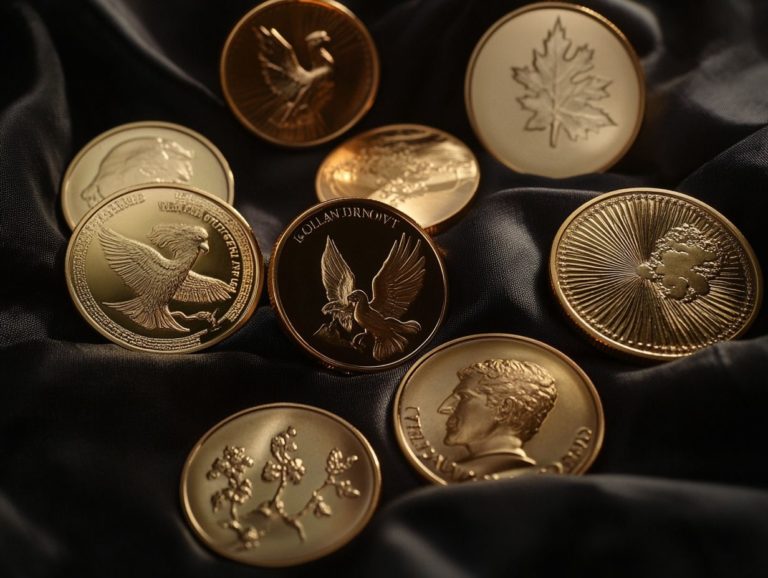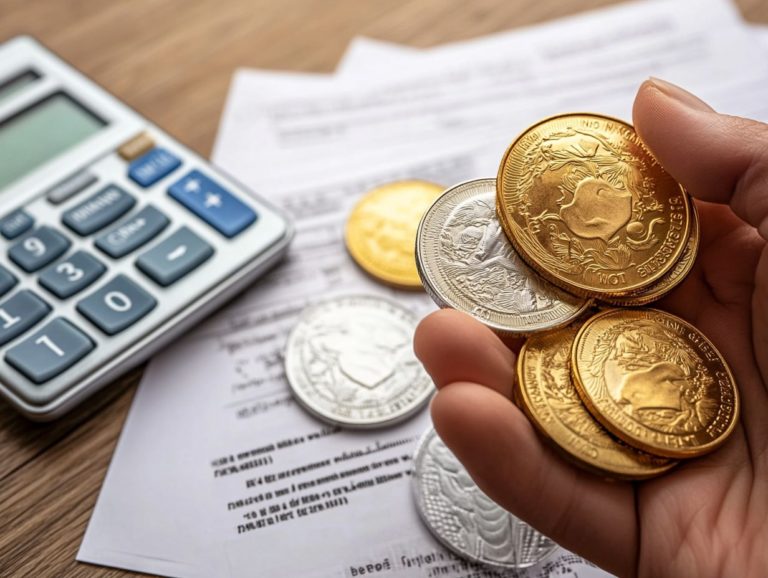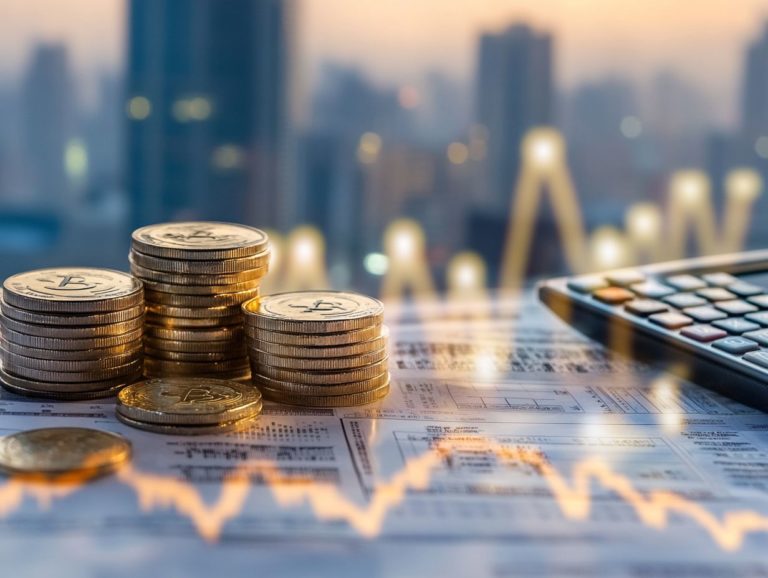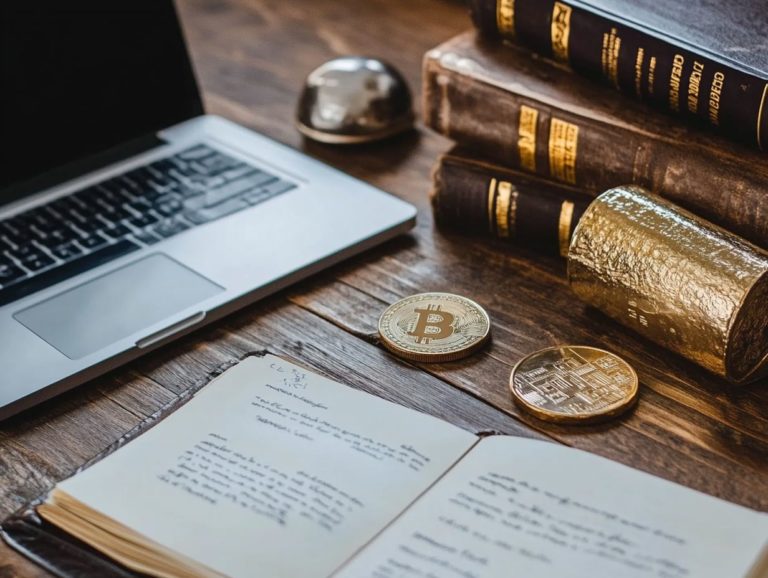Is Silver More Volatile than Gold?
Understanding volatility in precious metals is essential for you as an investor. Price fluctuations can offer both opportunities and challenges.
This article explores the factors that drive price changes in silver and gold. You ll learn about their differing volatility levels influenced by demand, industrial uses, and mining processes.
You ll also discover practical strategies for managing these fluctuations. This includes valuable insights into the long-term outlook of investing in silver and gold.
Let s dive into the exciting world of precious metals!
Contents
- Key Takeaways:
- Understanding Volatility in Precious Metals
- Comparing Silver and Gold
- Reasons for Volatility Differences
- Investing in Silver and Gold
- Frequently Asked Questions
- Is Silver More Volatile than Gold?
- Why is silver considered more volatile than gold?
- Does this mean that silver is a riskier investment compared to gold?
- Is silver always more volatile than gold?
- How does the volatility of silver and gold affect their prices?
- Can silver and gold prices be affected by the same factors?
Key Takeaways:
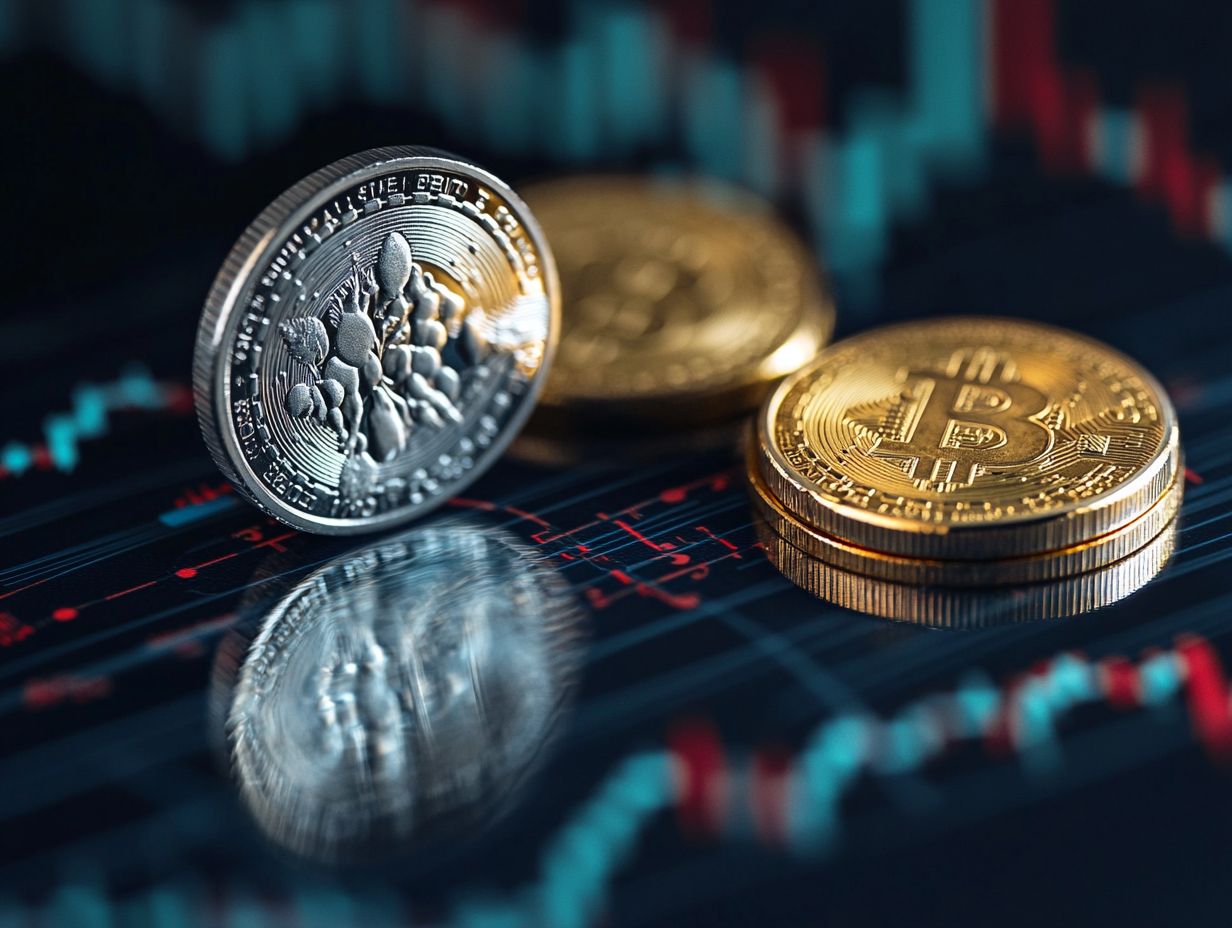
- Silver and gold both experience price swings, but silver is often more volatile due to its smaller market size and higher industrial demand.
- Differences in volatility stem from various factors, including industrial demand and mining methods.
- To manage price changes when investing, diversify your investments, think long-term, and stay updated on market trends.
Understanding Volatility in Precious Metals
Understanding volatility in precious metals is vital for elevating your portfolio. You should see price swings as a way to protect against inflation.
In recent years, these metals have shown considerable price changes due to various economic influences. This environment affects your investment strategies, urging you to adapt to market shifts and economic downturns.
Definition and Factors Impacting Volatility
Price volatility refers to sudden and significant price changes that can surprise you. These shifts are influenced by factors affecting supply and demand.
This volatility is shaped by investor sentiment, which can change quickly with the latest news. World events, like conflicts or trade disputes, add uncertainty to the market.
Economic indicators, such as inflation rates and employment statistics, play a crucial role. For instance, when inflation rises, many investors turn to gold and silver, driving prices up sharply.
Changes in central bank policies and currency strength can also intensify price fluctuations. Understanding these dynamics empowers you to navigate precious metal investments more effectively.
Comparing Silver and Gold
Comparing silver and gold is a crucial step in balancing your investment portfolio. Each metal has unique historical volatility trends.
Current market analysis shows different future potential based on price changes and industry demand. Understanding these dynamics helps you make informed investment decisions aligning with your financial goals.
Historical Volatility Trends
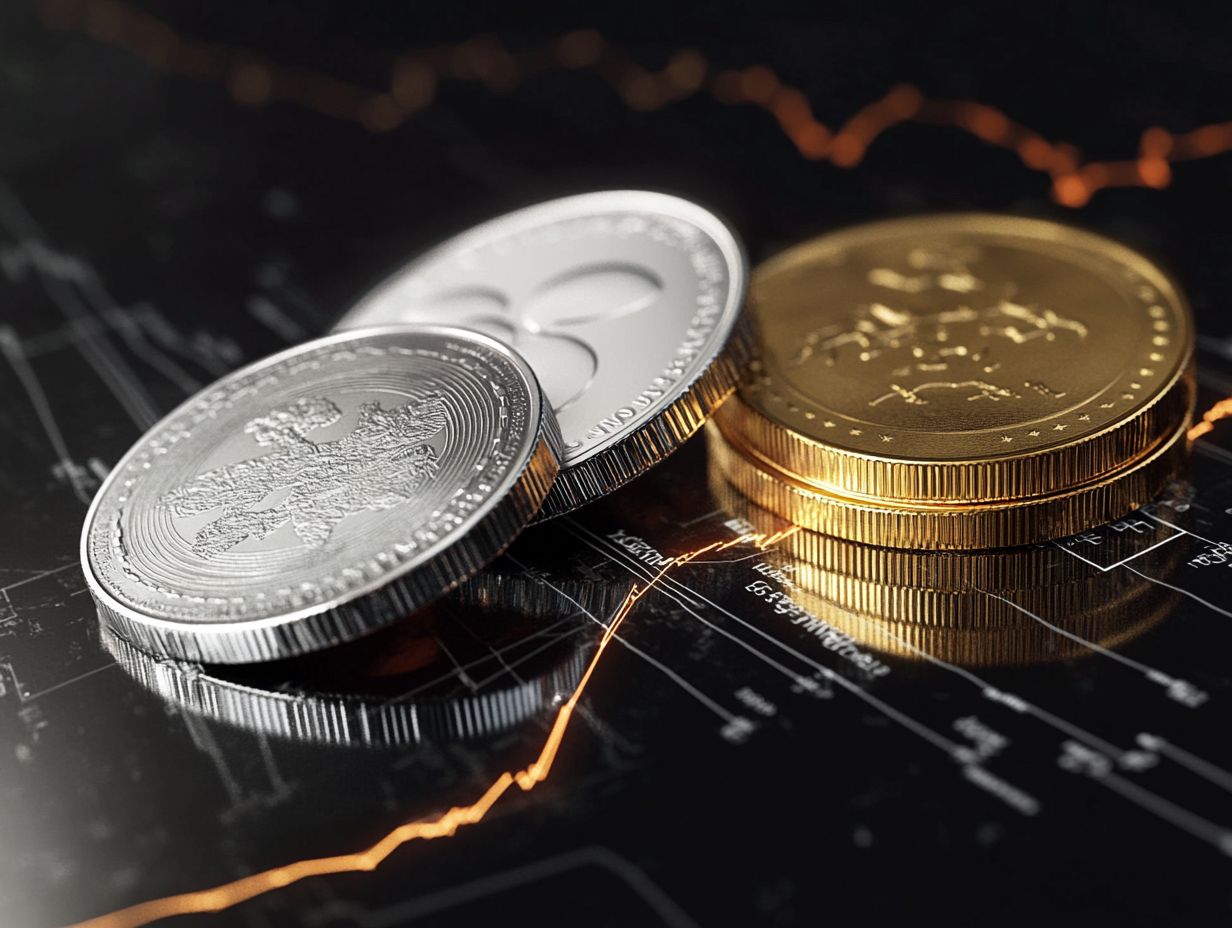
Analyzing historical volatility trends for gold and silver prices provides invaluable insights into market responses over time. This analysis can shape your investment strategies.
Consider the 2008 financial crisis. Both gold and silver saw sharp spikes in demand as investors sought safe-haven assets.
Economic pressures can dramatically drive prices upwards. Geopolitical tensions, like conflicts in the Middle East, also increase volatility.
High inflation or significant shifts in monetary policy such as changes in interest rates impact precious metal markets significantly. These moments are critical for forecasting future trends.
Current Market Analysis
The current market analysis reveals various global factors shaping investment opportunities. These factors range from economic conditions to industrial demand.
With inflationary pressures rising due to geopolitical tensions and supply chain disruptions, many investors are turning to safe-haven assets. Demand for these metals has surged as people seek protection against market volatility.
Economic indicators, such as interest rates and trade balances, greatly influence market value. Experts view gold and silver as strategic investments in these uncertain times.
Reasons for Volatility Differences
To understand the volatility differences between gold and silver, examine silver demand, its industrial uses, and the unique mining processes affecting their market stability.
Demand and Industrial Uses
Silver demand is driven by its industrial applications, especially in electronics and solar panels. This makes its price more volatile compared to gold.
This metal is also used in medical devices and water purification, creating a complex market landscape. Unlike gold, which mainly serves as a financial asset, silver’s diverse uses boost its demand across multiple sectors.
Shifts in these sectors can lead to significant price changes. For instance, technological advancements can increase silver’s demand, while economic downturns may reduce industrial consumption.
Supply and Mining Processes
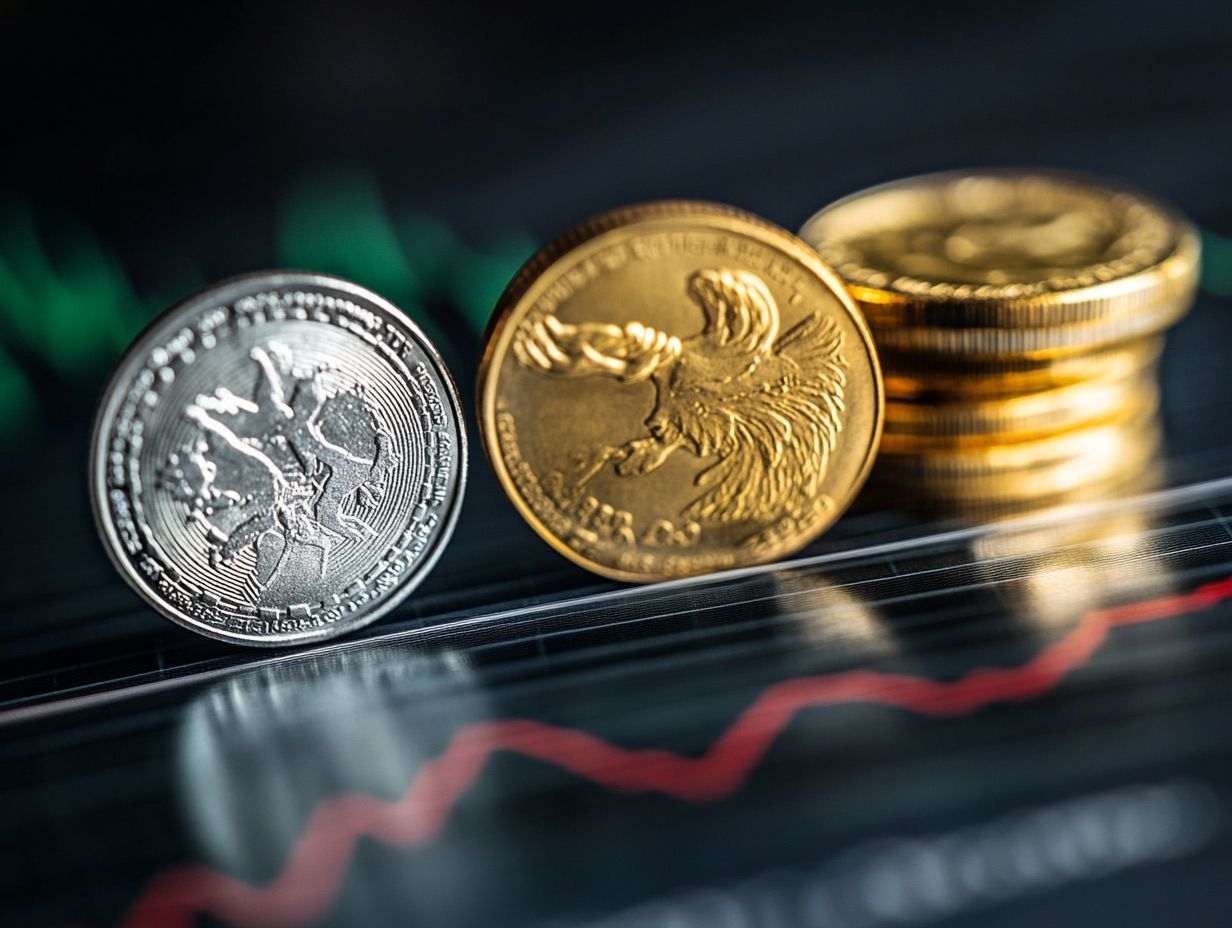
The supply and mining processes for gold and silver differ significantly. These differences lead to notable variations in price volatility and market availability.
Diverse factors shape the demand and supply dynamics of each metal. For instance, extraction costs determine how much miners are willing to produce, especially in regions with varied geological conditions.
Geopolitical factors can affect access to mining sites, leading to price fluctuations. Technological advancements improve extraction methods, influencing market behavior and volatility.
Investors must stay informed about these essential factors to navigate this complex landscape effectively.
Investing in Silver and Gold
Investing in silver and gold requires a solid understanding of various investment strategies. You ll find yourself weighing the benefits of physical assets versus financial instruments like mutual funds and exchange-traded funds.
You must also consider how to store physical holdings to ensure that your investment is both secure and practical.
Strategies for Managing Volatility
Managing volatility in precious metals involves creating a mix of different investments that align with your financial goals while incorporating measures to mitigate risks from price fluctuations.
Consider spreading your resources across various precious metals, such as gold, silver, platinum, and palladium. This strategy helps distribute risk and capitalize on market dynamics.
Timing is crucial. Conducting comprehensive market analysis allows you to pinpoint the best moments for buying or selling these valuable assets.
Utilizing hedging options like futures contracts or options can provide a safety net against sudden price drops, keeping potential losses limited. By implementing these actionable strategies, you ll not only enhance your resilience against market swings but also cultivate long-term stability in your investment portfolio.
Long-Term Outlook and Considerations
The long-term outlook for gold and silver presents promising opportunities. Incorporating these precious metals into your investment portfolio is wise, especially considering elements like market stability and historical performance.
By examining past market trends, you ll see that both gold and silver have reliably served as effective hedges against inflation and currency fluctuations. This intrinsic value tends to attract investors like you who seek security during periods of economic uncertainty.
The rising industrial demand for silver, along with increasing interest in sustainable investments, could drive prices upward. Analysts indicate that geopolitical tensions and central banks’ policies are likely to further influence the market. Stay informed about these dynamics to diversify your holdings effectively.
Frequently Asked Questions
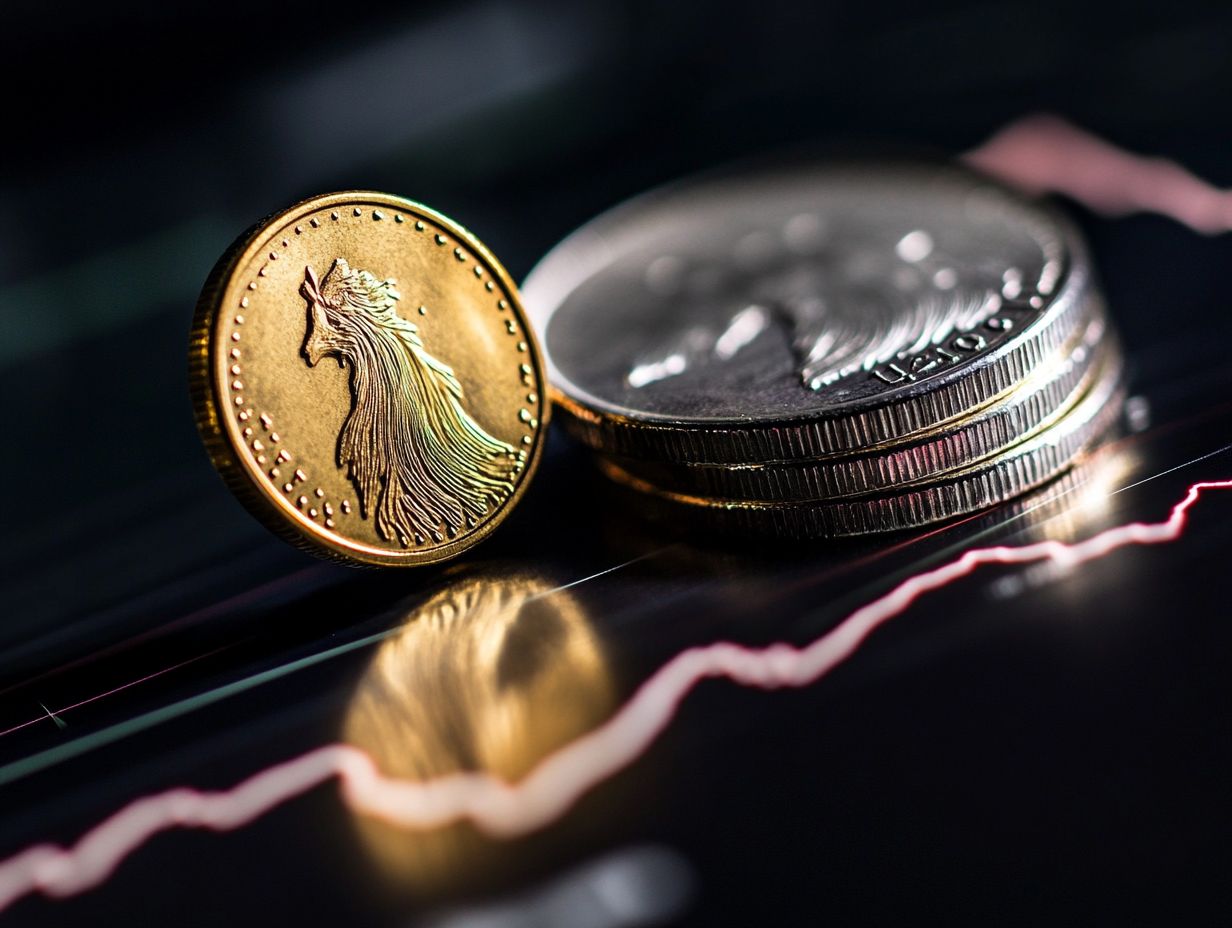
Is Silver More Volatile than Gold?
Yes, silver is generally considered more volatile than gold.
Why is silver considered more volatile than gold?
This is because silver has a smaller market size and is more heavily used in industrial applications, making its prices more susceptible to fluctuations.
Does this mean that silver is a riskier investment compared to gold?
In general, yes. Silver is considered a riskier investment due to its higher volatility. However, this also means silver has the potential for higher returns.
Is silver always more volatile than gold?
No, there are times when gold may experience higher volatility, particularly during economic uncertainty or market crashes.
How does the volatility of silver and gold affect their prices?
Higher volatility can lead to larger price swings. It s important for investors to closely monitor the market and make informed decisions.
Can silver and gold prices be affected by the same factors?
Yes, both precious metals can be influenced by economic and political factors, as well as changes in supply and demand, impacting their volatility levels.










